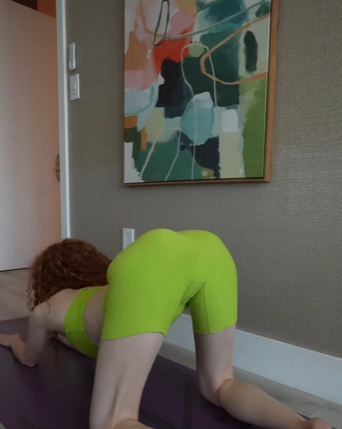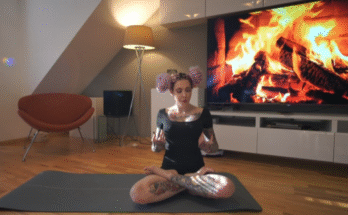
In today’s fast-paced world, stress seems to be an unavoidable part of life. Whether it’s from work deadlines, family responsibilities, financial concerns, or simply the hustle and bustle of daily routines, stress can take a toll on both our mental and physical well-being. But what if there were a simple, natural, and effective way to ease that tension? The answer might be simpler than you think—stretching.
The Connection Between Stress and the Body
When you’re stressed, your body reacts. Muscles tense, breathing becomes shallow, and your mind may race with anxious thoughts. Over time, this response can become chronic, leading to fatigue, headaches, tight shoulders, and poor posture. Stress isn’t just a mental burden—it lives in the body, too.
That’s where stretching comes in. Stretching is more than just a warm-up before exercise or a cool-down afterward. It’s a powerful tool to help relieve tension, relax the body, and calm the mind. With a few mindful movements, you can stretch the stress away and bring yourself back into balance.
How Stretching Reduces Stress
Stretching activates the parasympathetic nervous system—the part of your nervous system responsible for relaxation. When you stretch slowly and breathe deeply, your body interprets this as a signal to calm down. Blood flow increases, tight muscles release, and endorphins—your body’s natural feel-good hormones—are released.
Additionally, stretching helps improve circulation, oxygenate the muscles, and enhance flexibility. This, in turn, helps reduce the physical discomforts often associated with stress, such as back pain, neck stiffness, and headaches.

Simple Stretches to Ease Stress
You don’t need to be a yoga expert or a gymnast to stretch the stress away. Here are a few beginner-friendly stretches you can do at home, in the office, or anywhere you find yourself needing a break.
1. Neck Release
How to do it: Sit or stand up straight. Slowly tilt your head to the right, bringing your right ear toward your right shoulder. Hold for 20 seconds while breathing deeply, then switch sides.
Why it works: Many people hold stress in their neck and shoulders. This gentle stretch releases that tension and helps you relax.
2. Shoulder Rolls
How to do it: Sit or stand comfortably. Roll your shoulders forward in a circular motion for 30 seconds, then reverse.
Why it works: Shoulder rolls loosen up the upper body, release tension, and encourage better posture.
3. Cat-Cow Stretch
How to do it: Get on your hands and knees in a tabletop position. Inhale and arch your back, lifting your head and tailbone (Cow Pose). Exhale and round your spine, tucking your chin to your chest (Cat Pose). Repeat for 5-10 rounds.
Why it works: This dynamic stretch relieves spine tension, encourages deep breathing, and improves mobility.
4. Seated Forward Fold
How to do it: Sit on the floor with your legs extended in front of you. Inhale, raise your arms, and as you exhale, hinge at your hips to reach for your toes. Hold for 30 seconds.
Why it works: This stretch calms the nervous system and helps you turn inward, promoting mental stillness.
5. Child’s Pose
How to do it: Kneel on the floor, touch your big toes together, and sit on your heels. Fold forward with your arms stretched out in front or by your sides. Rest your forehead on the floor. Hold for 1-2 minutes.
Why it works: Child’s Pose is deeply calming and comforting, making it ideal for stress relief and emotional grounding.

Breathing Matters
To enhance the calming effects of stretching, always pair your movements with deep, mindful breathing. Inhale slowly through your nose, allowing your belly to expand. Exhale gently through your mouth or nose, letting your body soften. This simple practice helps reset your nervous system and deepens the relaxation process.
Make It a Daily Ritual
Stretching doesn’t need to take a lot of time to be effective. Even 5 to 10 minutes a day can make a noticeable difference in how you feel. Try incorporating a short stretching routine into your morning to start the day centered, or in the evening to wind down before bed.
You can also take stretch breaks throughout the day. If you work at a desk, stand up every hour and do a few gentle stretches. Not only will this help ease stress, but it will also improve your posture and reduce fatigue.

Stretching and Mindfulness
Stretching isn’t just a physical act—it can be a mindful one too. As you move, pay attention to how your body feels. Notice where you hold tension, and allow yourself to release it without judgment. This body awareness brings you into the present moment, where stress can no longer control you.
Combining stretching with practices like yoga, tai chi, or meditation can deepen your stress relief even further. These mind-body disciplines use movement, breath, and focus to promote harmony and peace from within.
More Than Just Flexibility
Often, stretching is seen only as a way to improve flexibility. While that’s a great benefit, its role in stress management is just as important. Stretching gives you a break from the mental noise, offers physical relief, and creates space for emotional clarity.
It’s also empowering. In a world where so much feels out of control, taking a few moments to care for your body with a stretch is a gentle act of self-love and healing.
Final Thoughts
The next time stress creeps in—whether it’s a pounding headache, tight shoulders, or overwhelming thoughts—pause. Breathe. Move. Stretch.
You don’t need fancy equipment or a gym membership. Just a quiet space, a few deep breaths, and the willingness to give yourself a moment of care.
Stretching is more than a physical activity; it’s a practice of tuning into your body and letting go. With consistency and intention, you can truly stretch the stress away and feel more grounded, relaxed, and alive each day.


